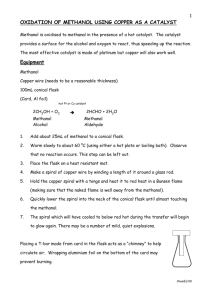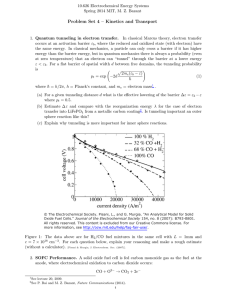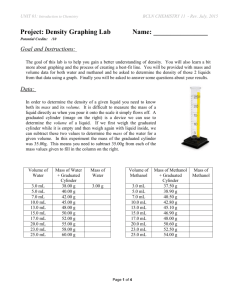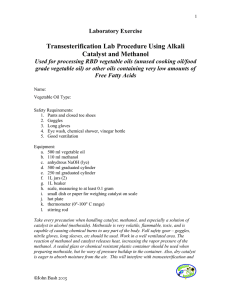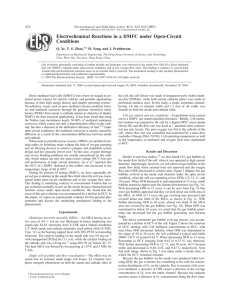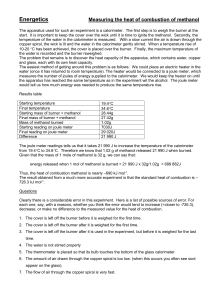146i
advertisement
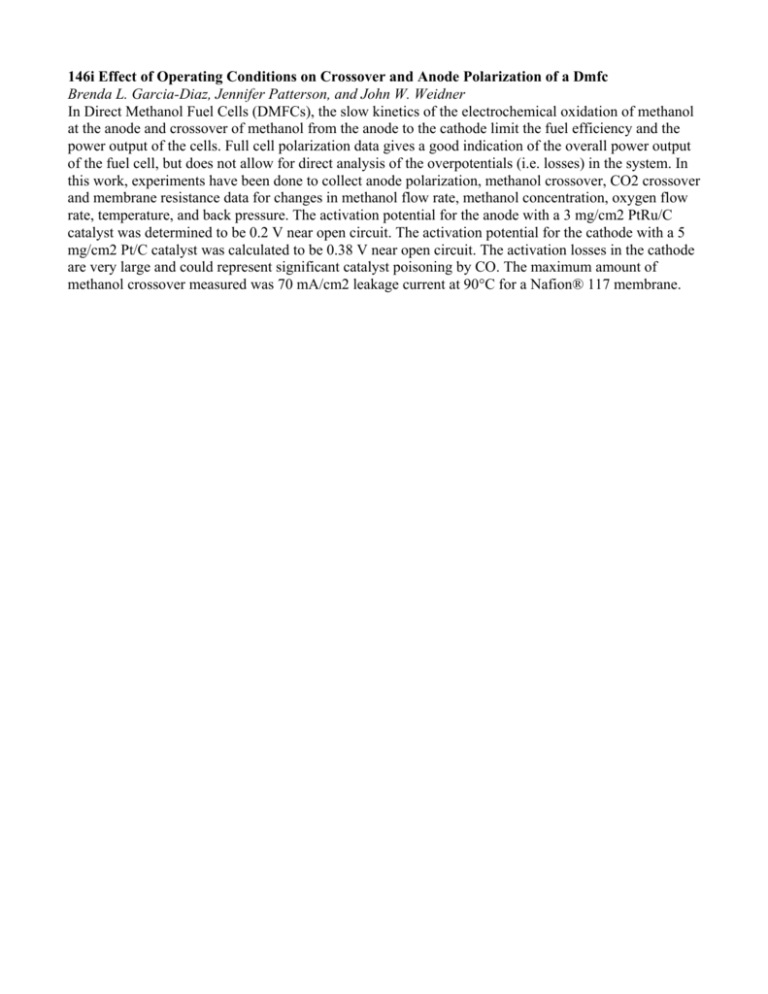
146i Effect of Operating Conditions on Crossover and Anode Polarization of a Dmfc Brenda L. Garcia-Diaz, Jennifer Patterson, and John W. Weidner In Direct Methanol Fuel Cells (DMFCs), the slow kinetics of the electrochemical oxidation of methanol at the anode and crossover of methanol from the anode to the cathode limit the fuel efficiency and the power output of the cells. Full cell polarization data gives a good indication of the overall power output of the fuel cell, but does not allow for direct analysis of the overpotentials (i.e. losses) in the system. In this work, experiments have been done to collect anode polarization, methanol crossover, CO2 crossover and membrane resistance data for changes in methanol flow rate, methanol concentration, oxygen flow rate, temperature, and back pressure. The activation potential for the anode with a 3 mg/cm2 PtRu/C catalyst was determined to be 0.2 V near open circuit. The activation potential for the cathode with a 5 mg/cm2 Pt/C catalyst was calculated to be 0.38 V near open circuit. The activation losses in the cathode are very large and could represent significant catalyst poisoning by CO. The maximum amount of methanol crossover measured was 70 mA/cm2 leakage current at 90°C for a Nafion® 117 membrane.
